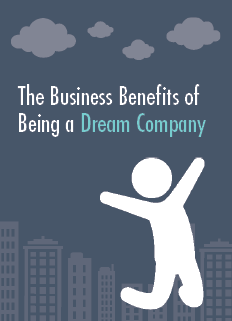You're ready to return to the office — but how do your employees feel?
Whatever form your return-to-office plan takes, it must address one of employees' most pressing concerns: child care.
The child care landscape has changed — many providers have even closed their doors for good. The result is a level of need never seen before. And it's a problem that impacts employees on all types of schedules.
One thing is clear: if you want your most effective employees back in the office, you need to offer them appealing family care options. Read on to learn how return-to-office and child care needs are connected, explore potential solutions, and discover the benefits they could yield.
Office Hesitance Requires Direct Solutions
Fewer than a third of employees consider themselves "highly likely" to go back to the office. This low number shows that even when weighed against comforts such as a dedicated workspace and co-worker camaraderie, plenty of employees aren't so quick to abandon their "new normal."
That's because there's more to returning to work than simply asking everyone to report in on a certain date.
Having Employees Back but Distracted Is Only a Partial Success
- To retain in-office employees for the long term, it's important for them to be content and energized in the office.
- Solving the child care dilemma for these employees removes a concern from their plates and helps them focus on their professional duties.
Return to the Workplace Offers a Chance to Improve Permanently
- Even if your business didn't provide a full-service child care offering in the past, there's never been a better time to add one.
- Refreshing your benefits and perks can give you a chance to recommit to providing a great employee experience.
Telling workers they have to abandon the care structures they've set up can be a big ask. But you have the power to help make the transition a smooth one. High-quality care options can remove a major stressor, making them not just a good benefit, but the best.
Child Care: The No. 1 Benefit Companies Can Offer
If your business hasn't planned for family care in its return-to-work plan, consider that strategy incomplete.
The numbers reflect its importance. Employer-sponsored child care can reduce turnover by 65% and make workers 49% more likely to become top performers.
There are a few specific factors making it more essential than ever for employers to offer industry-leading care:
Contraction in the Care Space
- One-quarter of child care providers have shut their doors for good, meaning 25% of your workforce can't depend on their previous option.
- The decrease in supply has made high-quality care harder to find than in the past. By offering an industry-leading option, your company can stand out to current and potential employees.
Competition for Top Performers
- The competition for today's top talent is intense, with the best performers able to choose between companies based on their perks and benefits.
- Industries that don't support remote and hybrid work, such as health care and manufacturing, already use subsidized child care as a top attraction and retention tool.
Employees have long known the advantages of employer-subsidized child care — especially those who live in "care deserts," or areas where few quality options are available. You can impress such workers by offering support they never expected to have within your company.
For high-performing employees, the need is real. For employers who can't afford to lose those valuable workers, so is the risk.
Flexible Work Calls for Evolved Child Care Options
Every employee's circumstances are different. As a result, one-size-fits-all offerings will only suit a small fraction of your current and potential workforce. Being adaptable is another marker of the quality you're offering, one that can resonate with virtually all your workers.
Even if employees work remotely or in a hybrid arrangement — with days in and out of the office — they still need reliable, consistent, and high-quality child care.
In 2020 alone, 3 million women left the workforce due to the inability to balance work with family care. Making accommodations for these professionals can help you boost your talent pool.
By diversifying your care options to take your employees' individual situations into account, you can deliver experiences that strengthen loyalty and attract top prospects. Flexible approaches include:
Full-service, On-campus Child Care
- If your goal is to bring your entire team back for in-person collaboration, teamwork, and contributions, a full-service, on-site child care option is one of the most enticing benefits you can offer.
- Employees who have started families while working from home, those whose primary child care options have closed, and potential new hires could all benefit from this service.
Subsidized Care for Remote Employees
- Just because a worker is contributing remotely doesn't mean they're free of child care needs.
- Subsidized or discounted full-service care at facilities near employees can be a pivotal attraction and retention tool for full-time, remote hires.
Gap Care
- Hybrid employees working some days at home and others in the office may need care only 2-3 days each week to fill the gaps — and gap care does exactly that. It’s similar to back-up care for emergencies, but employees can use it on a regular basis.
- Companies that offer a combination of full-service care and gap care can help their employees fill in a weekly schedule and ensure their family has the care they need.
In order to stay competitive in such a demanding talent market, your company can excel by offering a child care solution that employees can count on.
Quality and Adaptability Are Top Priorities
Your reaction to workers' child care needs can define the employer-employee relationship. With over half of companies — 59% — stating they're handling care case by case, without being guided by a solid plan, you can display a more serious approach.
How? Combine the reassurance of a formal plan with the flexibility to adapt to rapidly changing circumstances.
Remember to:
Lead With Quality
- The simple existence of child care options will not carry weight unless you can promise employees a high-quality, consistent experience for their children.
- The voice of the employee is louder than ever — workers are calling for high-quality care options as a condition to return to the office.
Prepare to Adapt
- Your return-to-work plan is likely a work in progress. You should work with a provider that can deliver multiple care models, suiting different types of employment.
- Over the next 1-2 years, many companies will shift the balance of remote, hybrid, and in-person employees. By embracing flexibility in care, you can ensure your benefit offerings evolve alongside your work style.
Stay competitive in this space by working with the No. 1 provider of education and child care services. Bright Horizons, trusted by 37% of Fortune 500 companies, is the perfect partner for demanding market conditions and evolving needs.





